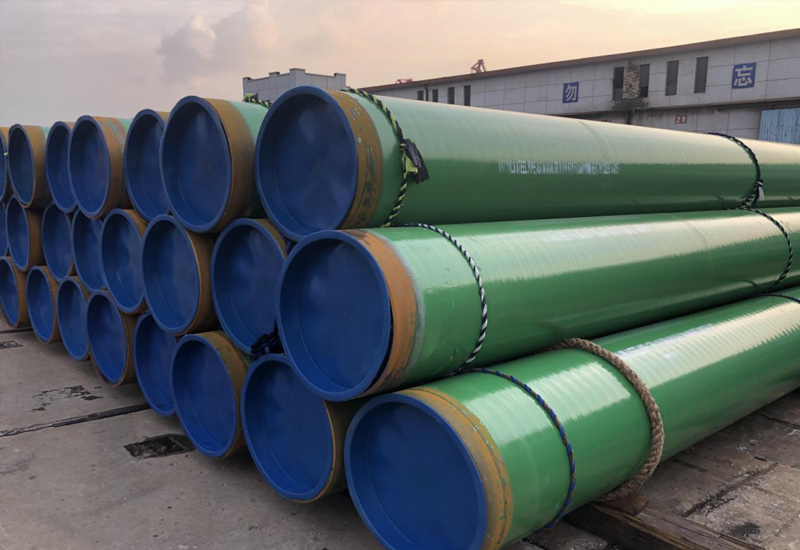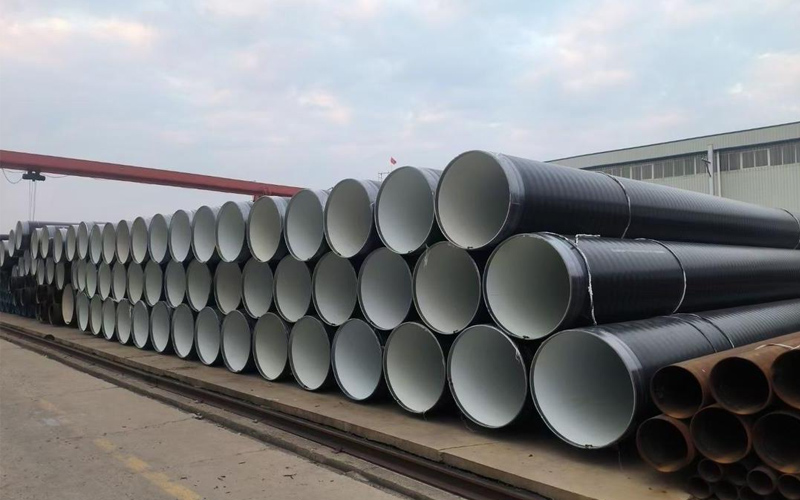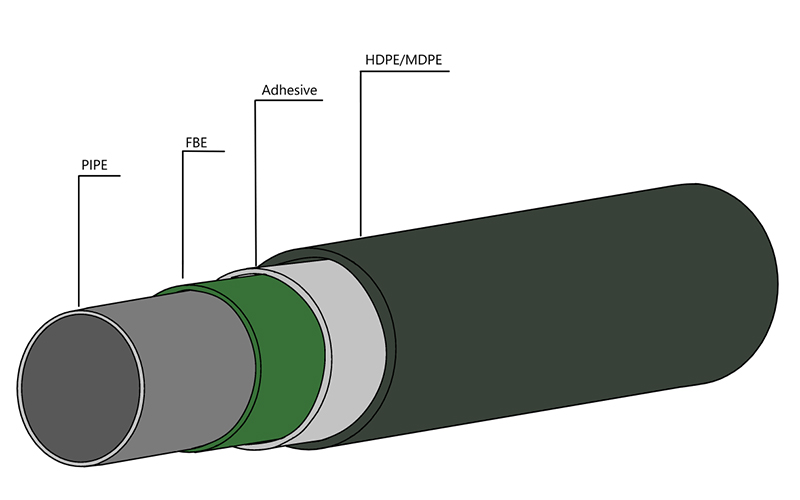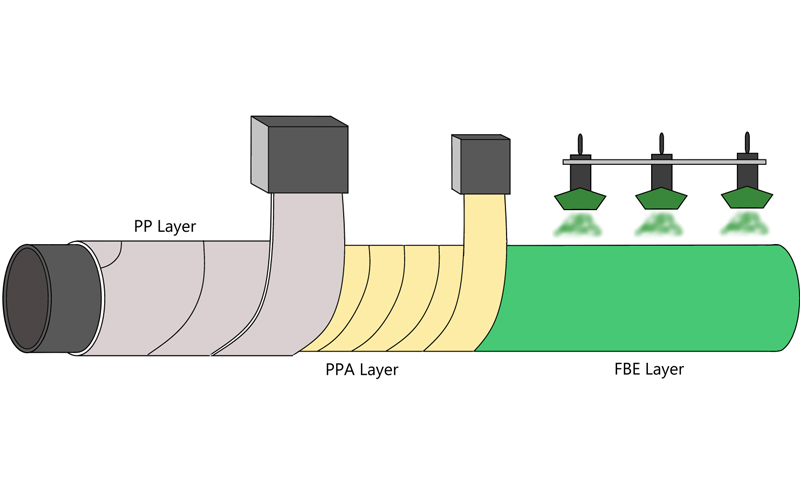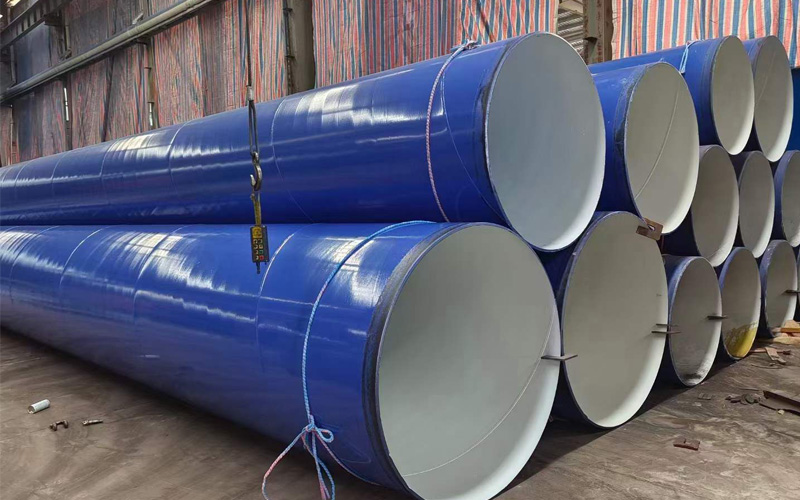A Guide to DIN 30670: The Standard for 3LPE Steel Pipe
In the global steel pipe and pipe fitting market, especially for European customers, it is mandatory to comply with the recognized standards.DIN 30670, a German industrial standard, sets the benchmark for 3-layer polyethylene (3 LPE) coating quality, performance, and durability on steel pipes. For engineers, purchasing managers and quality control professionals who export to Europe or handling European-funded projects, understanding DIN 30670 is key to product acceptance and success of the project. This guide subdivides the core, technical requirements, comparison to ISO 21809, and project value of this standard.
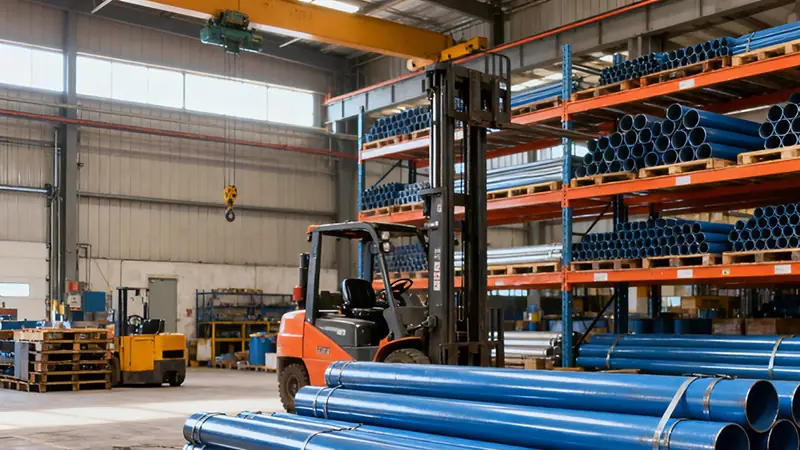
What is DIN 30670? The German Standard for PE coatings
DIN 30670, published by Germany’s DIN (Deutsches Institut for Normung), governs polyethylene coatings on steel pipes and fittings. This product aims to ensure consistent anticorrosion of key infrastructure (oil/gas pipelines, water systems and industrial pipelines), and is the cornerstone of the European polyethylene coatings market. Unlike generic guidelines, it’s performance-based, covering every coating stage—from steel surface prep to final inspection.
This standard mainly focuses on three layers of LPE coatings: the main epoxy resin layer (steel bonding), the middle bonding layer (epoxy resin-polyethylene bonding) and outer high-density polyethylene (HDPE) layer (mechanical protection). DIN 30670 defines material properties, application methods and tests of each layer to ensure compliance with European project requirements (underground, underwater and harsh industrial applications).
For enterprises exporting 3 PE coated pipelines to Europe, it is usually necessary to meet DIN 30670 standard. European buyers rely on it to verify the reliability of life for 20-50 years. Conforming to the standard shows a commitment to quality and builds trust with European customers.
Key Technical Requirements of DIN 30670
The advantage of DIN 30670 lies in quantifiable technical requirements, which eliminates the ambiguity of quality. The following are the key parameters affecting the properties of polyethylene coatings.
1.Coating Thickness (Minimum Requirements)
This standard specifies the minimum thickness of every 3 LPE layer.
· Main epoxy resin: 120 µm (to ensure the adhesion of steel and moisture/chemical corrosion resistance).
· Intermediate adhesive: 180 µm (to prevent delamination between epoxy resin and polyethylene).
· Outer polyethylene: 2.0 mm (pipes with a nominal diameter less than 100 mm) or 2.5 mm (pipes with a nominal diameter greater than 100 mm) -it is very important for impact, wear and ultraviolet protection.
It also specifies testing methods (destructive cross-sections, non-destructive magnetic induction/eddy current) for consistent thickness measurements.
2.Peel Strength (Adhesion Test)
Peeling strength (force that separates the coating from steel) is very important for durability. DIN 30670 requires a minimum 10 n/mm at 23 ± 2°c (room temperature) and -20 ± 2°c (low-temperature European winters) —ensuring adhesion during temperature fluctuations.
The test includes cutting a 25 mm wide coated strip, stretching it at 90 degrees with a tension machine, and measuring average force to determine compliance.
3.Impact Resistance and Indentation
In order to prevent mechanical damage (transportation/installation), this standard includes.
· Impact resistance: 1.0 kg weight dropped 1.0 meter onto the coating—no cracks, delamination, or steel exposure allowed.
· Pressure mark resistance: apply a force of 1000 n to the coating for 60 seconds-indentation depth ≤ 30% of total thickness of the coating.
4.Elongation at Break
This can measure the flexibility of the thermal expansion/contraction of the pipeline. DIN 30670 requires that the elongation at break of polyethylene outer layer should be at least 300% (room temperature, longitudinal direction and transverse directions). The test used a “dog bone” sample until it breaks, and the record length increased by a percentage.
How Does DIN 30670 Compare to ISO 21809?
Both standards focus on 3 LPE coating performance, but key differences exist.
· Scope: ISO 21809 covers multiple coatings (3 LPE, 3 LPP, FBE), while DIN 30670 is polyethylene-specific (deeper specialization).
· Technical specifications: ISO 21809 requires a peel strength of 9 n/mm and an elongation at break of 250; DIN 30670 is quite strict (10 n/mm, 300%).
· Regional acceptance: ISO 21809 is global, but DIN 30670 is the de facto standard in Europe (adapting to local conditions, such as cold winters and strict regulations). For European exports products, DIN 30670 simplifies the approval.
Why Specifying DIN 30670 Matters for Your Project
1.The quality and consistency are guaranteed.
The strict requirements of DIN 30670 force manufacturers to carry out end-to-end quality control (from raw materials to application). This reduces coating failures, rework and delays-the purchasing managers avoids batch-by-batch testing and nonconforming products.
2.Extend the service life and reduce the maintenance cost.
The specifications of this standard (2.5 mm polyethylene, 10 N/mm peel strength, 300% elongation) ensure that the coating life is 20-50 years. This reduces the maintenance costs (less inspections and maintenance) and allows engineers to design reliable systems.
3.Compliance in Europe
DIN 30670 is usually a mandatory standard for public/private projects in Europe (EU regulations and German/French/Dutch laws refer to this standard). Even if it is not needed, it can provide a competitive advantage-European customers think it is a quality symbol.
4.Reduction of environmental/safety risks
Strict anti-corrosion protection can minimize leakage (oil/gas pollution, water interruption), comply with strict environmental regulations in Europe, and avoid reputation/financial losses.
Conclusion
DIN 30670 is a successful roadmap for European 3 PE coated pipelines, ensuring durability and compliance. Our company uses high-quality polyethylene coatings, advanced equipment and strict quality control to manufacture three kinds of PE-coated pipes that meet or exceed their requirements. Whether oil/gas, water resources or industrial projects, we provide solutions for European exports. Contact us to learn more about our DIN 30670-compliant products.
Get Your Custom Steel Pipe Quote Today!
Provide us with your project details (like application, specifications, quantity). Our experienced team will respond with a tailored solution and competitive quote within 24 business hours.
Related Articles
ASTM A53 vs. API 5L: A Guide to Selection and Application
Introduction:Technology differences determine success or failure, and selection needs to be “precise”
Steel Density Analysis: Core Differences between Mild and Medium Carbon Steels and Industrial Applications
3LPE coated steel pipe: a solid barrier in the field of industrial corrosion protection
3LPP coated pipe: anti-corrosion guard in high temperature and high pressure environment
FBE steel pipe: the technological armor of the steel defense line
HOT TAGS
latest posts
- ASTM A53 vs. API 5L: A Guide to Selection and Application
- Cracking the Code: What Makes SSAW Spiral Steel Pipes the Engineer’s Top Pick Worldwide
- What is ASTM A252 pipe? Engineering basic solution.
- A Concise Guide to EN 10217: European Standard for Pressure Welded Tubes
- The Hydrostatic Test: Why It’s the Final Defense for API 5L Pipe Integrity




